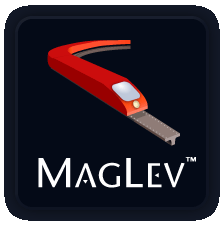Install MagLev
There are three ways to install MagLev:
Minimum Requirements
- 64-bit hardware. There are no plans for a 32-bit version.
- 64-bit Linux, Mac OS X, or Solaris X86 operating system
- a version of ruby and rake to use during installation
- root access so you can increase default shared memory settings (only during initial install)
Install with Ruby Version Manager
RVM is useful if you want to compare behavior of various Ruby implementations or versions of MagLev. Install using:
rvm install maglev
See the rvm home page for details of using RVM.
RVM will automatically start a MagLev server when you rvm use
maglev. That server is left running if you rvm use any_other_Ruby.
To stop your MagLev server:
rvm use maglev
maglev stop
Note: maglev stop will only stop the version of MagLev currently in use.
If you’re using more than one, you’ll have to maglev stop each of them – e.g.
rvm use maglev-1.0.0
maglev stop
rvm use maglev-head
maglev stop
ProTip: To kill all the MagLev servers rather than shut them down gracefully, run
ps -ef | grep /sys/stoned and kill the stoned processes that show up.
It takes a short time before they shut down, as they do a bit of cleanup first.
Note: When running rake from MagLev, you cannot perform tasks which
affect MagLev itself, like rake maglev:stop. You have to use the
bin/maglev shell script instead.
Install from GitHub
This version is best for MagLev contributors and for developers who like to live on the bleeding edge or use git tools.
Create a new directory on a local (not NFS) file system to hold the MagLev source tree and other files. Change to that directory, then:
-
Clone the MagLev github repository then set
$MAGLEV_HOMEand your$PATHgit clone git://github.com/MagLev/maglev.git cd maglev export MAGLEV_HOME=$PWD export PATH="$PATH:$MAGLEV_HOME/bin" -
Install the VM. If this is the first time you’re installing MagLev, run:
./install.sh # from the maglev directoryOr, if you’ve already run
install.shon the machine, then you can use the upgrade script:./update.sh # from the maglev directory
To use MagLev, you need to run install.sh at least once. install.sh
does everything upgrade.sh does, but also does some initial configuration
of your system to ensure MagLev’s shared caching and other features will
work.
When you git pull, check whether the second digit in the MagLev
version has changed. If it has you’ll need to run update.sh to
ensure you don’t get version skew. We’ll tweet when an update.sh
is needed. You don’t need to know a version number to update. The
installer/updater figures that out from the version.txt file.
You’ll have all the functionality of git, but unless you create a new
clone before each update.sh, you may be unable to revert to an earlier
version. Why? The install/upgrade script creates a new copy of the MagLev
data repository including persistent kernel code. The scripts make one
level of backup, but we won’t be providing migration scripts quite yet.
Install a specific MagLev release
This retrieves a specific tested release of MagLev rather than the current development version.
- Go to the MagLev archive
- Download a standard MagLev release – e.g. MagLev-1.1beta2.tar.gz, or it’s equivalent git archive – e.g. MagLev-1.1beta2-git.tar.gz.
- Uncompress the archive, cd to the newly created directory, and follow the process in Install from GitHub starting from the
export MAGLEV_HOME=$PWDstep.
